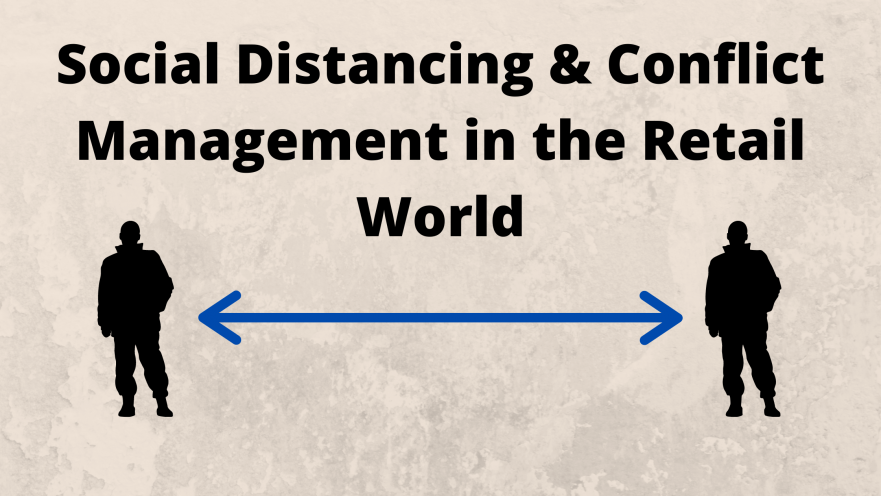During this COVID-19 pandemic the medical workers, doctors and nurses caring for those who have gotten sick from the virus are being called heroes because they are risking their lives to save lives. On a very similar level, the retail workers also belong to the so-called “essential” workers due to them exposing themselves to the virus but also by ensuring that everyone has access to the necessities of house supplies, food and medical cannabis. Working in these types of essential industries is evidently coming with a very high price. This in turn has caused an increase in the public’s demand to provide these employees with “hazard pay”, as a form of compensation.
The retail stores have become popular hot spots for spreading the virus. Consequently, social distancing and staying 6ft. apart has become the “new norm” for social interactions. This includes no hugging, no handshaking, wearing masks and gloves, etc. In this sense, the way we interact with each other remains crucial to make sure no escalations occur. And escalations in times of increased social tensions and where people are becoming frustrated with this “new way of life” are happening more often.
But how can such escalations be prevented when they occur at the grocery store or dispensary, for example? The guards and asset protection managers who are standing by the entrances at Walmart, one of the biggest retailers in the US, are there to protect everyone and ensure safety from COVID-19. What are they supposed to do if they are confronted by an angry customer who responds with violence to the request to comply to the CDC safety guidelines, such as wearing a mask before entry? Dave Young, the Co-founder and Director of Conflict Management at Vistelar knows the answer. In his interview with NRF (National Retail Federation, major representative & supporter of the retail industry) he describes certain strategies for a “contact professional” working in an industry that interacts with the general public to manage these types of potential conflicts without touching the angry customer (here summed up):
- Prevention: The main thing is to not even let a conflict happen in the first place and if it does to intervene and not let the conflict become violent.
- Responsibility: Not only managers or supervisors but all staff members need to view it as their responsibility to manage such conflicts and “put the fire out.” Recognizing that you are not responsible for the outcome but for the process.
- Dignity: Treat people with dignity by showing and expressing empathy for the other person.
- Maintaining Space: Giving the other person space, not invading in their personal space and maintaining that as a sign of respect
- Listening: Listening with all your senses without interrupting the other person and communicating instead of miscommunicating
- Importance of Compliance: Making sure to remind the other person of the necessity to comply to the safety guidelines as a common need
- Cooperation instead of hostility: Showing understanding, accommodating, and explaining things to encourage mutual understanding and avoid further conflict/hostility.
- Appropriate Action: Be prepared to act appropriately and call the police, if necessary and if all attempts to prevent the conflict/escalation have failed. Out-of-control situations are rare, the more trained the people are to manage it.
- Watching out for the 5 indicators of safety violations: a) Not being able to manage the distance between each other on a comfortable level, b) positioning in terms of where and how one stands as expressing a level of respect, c) tone of voice as a level of frustration, d) choice of words, such as cussing and insulting as a level of disrespect and e) hand movements, such as taking off one’s jewelry, watch, flip-flops, shoes or hat as a sign of broken communication.
- Providing options without pressure: Letting the other person know they have options to choose from so they can reconsider before the escalation continues.
Accordingly, as a way to be better prepared and manage such critical scenarios, it would make sense to have each retail business have their staff members go through conflict management classes together so they can learn these necessary techniques. Unfortunately, many retailers seem to be more focused on meeting the high customer demand by hiring more employees, but this appears to be turning into a vicious cycle. End of March 2020 Wando Evans was one of the first Walmart employees who died because of the virus and one week later Walmart stepped up their game by providing more precautions, such as implementing stricter social distancing, supplying their employees with PPE (personal protection equipment), gloves and sanitizers, using temp checkers before every shift and putting up plexiglass barriers at the cash registers, etc. Amazon and Instacart workers but also various cannabis retailers have been doing the same.
Social distancing as the new norm has changed our world so much that we are forced to be more considerate of each other and to remain disciplined enough to not let any situation turn violent no matter how frustrating the circumstances may be. Applying such conflict management strategies in the workplace that relies on essential workers is necessary and contributes to making everyone feel more safe and stay healthy.

